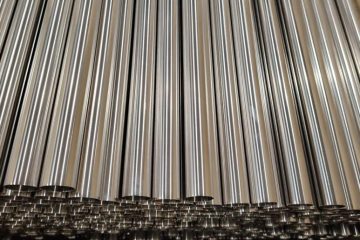Homeowners and property managers around the globe worry a lot about water damage. Whether caused by floods, burst pipes, or leaky roofs, water damage can wreak havoc on structures, belongings, and health. Traditionally, water damage restoration has involved time-consuming processes and significant disruptions to occupants. To make recovery easier and less disruptive to impacted areas, a new wave of restoration techniques has evolved, bringing cutting-edge technology, methodology, and tactics to the table. In this article, we delve into the Restoration Revolution, exploring the innovative approaches to transforming water damage recovery.
A Comprehensive Guide To Water Damage
Before delving into innovative restoration approaches, it’s crucial to understand the nature and impact of water damage. Water damage can occur suddenly, such as during natural disasters like hurricanes or flash floods, or gradually, as a result of plumbing leaks or roof damage. For whatever reason, water seepage can produce a cascade of problems, such as structural damage, mold development, electrical dangers, and water contamination, which can pose health threats.
Traditional Restoration Methods
Historically, water damage restoration has relied on conventional methods such as extraction, drying, and dehumidification. While effective, these approaches often involve significant time and manpower, leading to extended downtime and disruption for occupants. Additionally, traditional methods may not address underlying issues such as hidden moisture pockets or microbial growth, posing long-term risks to property integrity and occupant health.
The Restoration Revolution
The Restoration Revolution represents a paradigm shift in water damage recovery, embracing innovative technologies, techniques, and strategies to enhance efficiency, effectiveness, and sustainability. Below are some of the key components driving this revolution?
Advanced Moisture Detection:
Traditional moisture detection methods often rely on visual inspection or handheld devices, which may not accurately pinpoint hidden moisture. Innovative approaches utilize advanced technologies such as infrared thermography and moisture meters to identify moisture levels within structures accurately. This enables restoration professionals to target affected areas more precisely, minimizing unnecessary demolition and reducing overall restoration time.
Rapid Structural Drying:
The application of air movers and dehumidifiers is a time-honored technique for drying off wet surfaces. However, this process can be time-consuming, especially in large or complex structures. Rapid structural drying techniques, such as injection systems or desiccant dehumidification, accelerate the drying process by creating optimal drying conditions within the affected space. As a result, drying time is reduced, and the likelihood of secondary damage, like mold growth, is minimized.
Controlled Environment Solutions:
Maintaining optimal environmental conditions during the restoration process is critical to preventing microbial growth and ensuring the effectiveness of drying efforts. Innovative solutions such as climate-controlled drying chambers or temporary containment structures provide restoration professionals with the ability to control temperature, humidity, and airflow within the affected area. This promotes faster drying times and more consistent results, ultimately reducing overall restoration costs and downtime.
Data-Driven Decision Making:
The restoration process can benefit from better decision-making and proactive risk management with the use of data analytics and predictive modeling. Restoration experts can prevent expensive delays or complications by spotting any problems early on by measuring variables like humidity, temperature changes, and airflow patterns.
Green Restoration Practices:
As environmental sustainability becomes increasingly important, the restoration industry is embracing eco-friendly practices and technologies. From biodegradable cleaning agents to energy-efficient drying equipment, green restoration solutions prioritize environmental responsibility while delivering effective results. These innovative approaches not only reduce the carbon footprint of the restoration process but also contribute to healthier indoor environments for occupants.
ConclusionThe Restoration Revolution is transforming the water damage and restoration industry, ushering in a new era of efficiency, effectiveness, and sustainability. Restoration experts can lessen the toll that water damage takes on homes and their inhabitants by implementing cutting-edge technology, methods, and strategies. From advanced moisture detection to rapid structural drying, these innovative approaches are revolutionizing the way we recover from water damage, ensuring faster, more cost-effective restoration outcomes. As the industry continues to evolve, the future of water damage recovery looks brighter than ever before.



